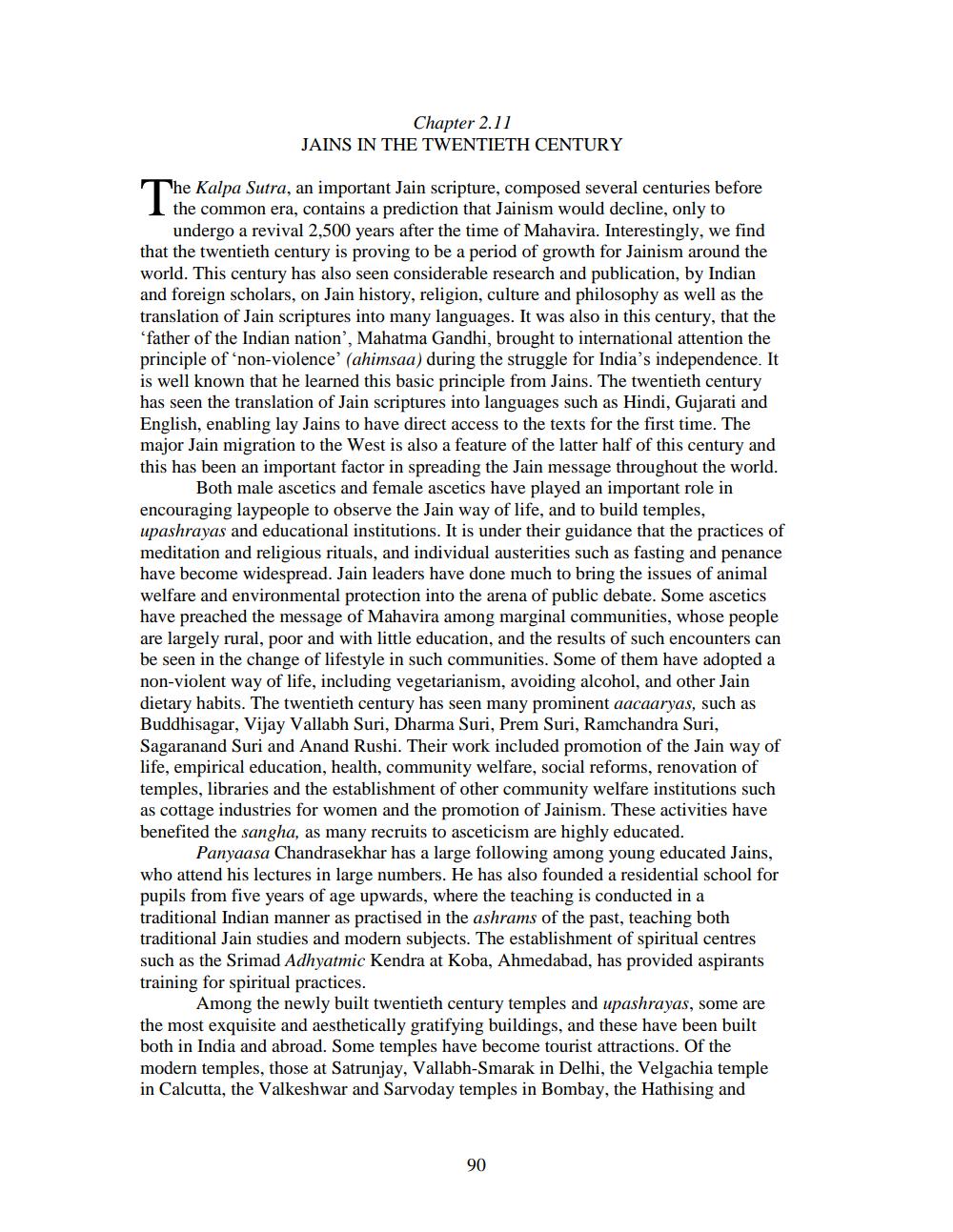________________
Chapter 2.11 JAINS IN THE TWENTIETH CENTURY
The Kalpa Sutra, an important Jain scripture, composed several centuries before I the common era, contains a prediction that Jainism would decline, only to
undergo a revival 2,500 years after the time of Mahavira. Interestingly, we find that the twentieth century is proving to be a period of growth for Jainism around the world. This century has also seen considerable research and publication, by Indian and foreign scholars, on Jain history, religion, culture and philosophy as well as the translation of Jain scriptures into many languages. It was also in this century, that the 'father of the Indian nation', Mahatma Gandhi, brought to international attention the principle of 'non-violence' (ahimsaa) during the struggle for India's independence. It is well known that he learned this basic principle from Jains. The twentieth century has seen the translation of Jain scriptures into languages such as Hindi, Gujarati and English, enabling lay Jains to have direct access to the texts for the first time. The major Jain migration to the West is also a feature of the latter half of this century and this has been an important factor in spreading the Jain message throughout the world.
Both male ascetics and female ascetics have played an important role in encouraging laypeople to observe the Jain way of life, and to build temples, upashrayas and educational institutions. It is under their guidance that the practices of meditation and religious rituals, and individual austerities such as fasting and penance have become widespread. Jain leaders have done much to bring the issues of animal welfare and environmental protection into the arena of public debate. Some ascetics have preached the message of Mahavira among marginal communities, whose people are largely rural, poor and with little education, and the results of such encounters can be seen in the change of lifestyle in such communities. Some of them have adopted a non-violent way of life, including vegetarianism, avoiding alcohol, and other Jain dietary habits. The twentieth century has seen many prominent aacaaryas, such as Buddhisagar, Vijay Vallabh Suri, Dharma Suri, Prem Suri, Ramchandra Suri, Sagaranand Suri and Anand Rushi. Their work included promotion of the Jain way of life, empirical education, health, community welfare, social reforms, renovation of temples, libraries and the establishment of other community welfare institutions such as cottage industries for women and the promotion of Jainism. These activities have benefited the sangha, as many recruits to asceticism are highly educated.
Panyaasa Chandrasekhar has a large following among young educated Jains, who attend his lectures in large numbers. He has also founded a residential school for pupils from five years of age upwards, where the teaching is conducted in a traditional Indian manner as practised in the ashrams of the past, teaching both traditional Jain studies and modern subjects. The establishment of spiritual centres such as the Srimad Adhyatmic Kendra at Koba, Ahmedabad, has provided aspirants training for spiritual practices.
Among the newly built twentieth century temples and upashrayas, some are the most exquisite and aesthetically gratifying buildings, and these have been built both in India and abroad. Some temples have become tourist attractions. Of the modern temples, those at Satrunjay, Vallabh-Smarak in Delhi, the Velgachia temple in Calcutta, the Valkeshwar and Sarvoday temples in Bombay, the Hathising and
90




